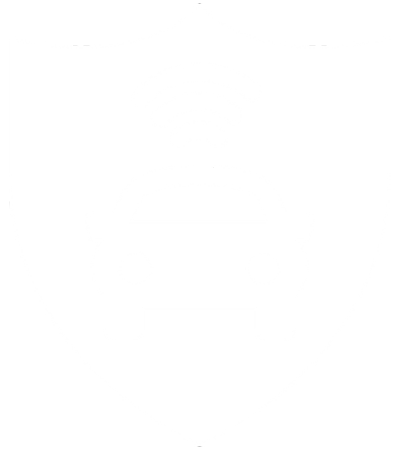School leaders in the United States find themselves reeling from the one-two punch of teacher shortages and budget reductions. With a limited ability to increase teacher salaries, administrators are looking for other ways to improve teacher quality of life and working conditions.
According to the Institute of Education Sciences, 44% of all schools have at least one vacancy in teacher or staff positions, with one in ten schools experiencing a vacancy rate of greater than 10%. More than half of the vacancies are due to resignations, an all-too-familiar refrain for school leaders who watch promising teachers burn out from stress and overwork.
Adding to their woes, school budgets are being reduced because of falling enrollment, which is tied to funding in most cases. The Return2Learn Enrollment Tracker shows that more than 1.2 Million students have left public schools since the pandemic began.
Innovative school leaders are increasingly turning to technology solutions to reduce the non-academic workload so teachers spend more time teaching and less time on operational and administrative tasks. Their goal is to improve workplace satisfaction and reduce teacher burnout.
5 Innovative Tech Strategies To Help Your Teachers
Teachers become teachers for one simple reason – to teach! By using a few ingenious, technology-enabled strategies, administrators can reduce the amount of time teachers spend on non-academic tasks like attendance, emergency management, and dismissal, and give them more time back for instruction.
1. Automate daily or per-period attendance
Did you know that in a school with 500 students, teachers spend more than 3,100 hours (about 4 months) per year taking attendance, according to a 2021 attendance study? That same study shows that even more time is wasted when you consider that 1 in 3 respondents is uncertain of the accuracy of attendance records at their schools.
With an automated day-level or per-period attendance solution, students are empowered to check in on campus or even each class period themselves using a QR code, barcode, or RFID tag. Teachers, staff, and administrators get real-time, school-wide insight into who is on campus and where they were last located. The time saved can be rededicated to academic instruction, and ultimately lead to improved student outcomes.
2. Use digital hall passes
Students leaving the classroom temporarily can significantly disrupt the learning process. An automated hall pass system allows students to check out of class to go to the restroom, nurse’s station, or counselor’s office without stopping the instruction. It has the added benefit of keeping students accountable by providing insight into truancy and hall pass abuse.
Like an attendance solution, automated hall passes can be activated by student-specific identification tools like a QR code, barcode, or RFID tag, and destinations can be defined by the school for ease, consistency, and clarity.
3. Relieve stress in emergencies with a comprehensive visitor management and emergency attendance solution
Whether it is a drill or an actual emergency, precious time can be wasted looking for students, staff, or visitors who are on campus (and reconciling attendance with students who are absent). Beyond the loss of instructional time, teachers can experience tension and anxiety because they are on the front lines of accounting for people in the building.
Schools that use a cloud-based visitor management solution that is tied to their student information system find it significantly easier to get a real-time, accurate accounting of who is on campus and where they were last seen. Look for visitor management systems that are purpose- built for K-12 schools. They can be iPad-based and portable, and are able to be moved from the front office to an assembly, a library, or an auditorium, providing greater flexibility.
An emergency attendance app can also help reduce lost time. When your teachers and staff are running multiple lockdown or fire drills per year, the time spent doing manual attendance checks with rosters and folders can be mind-numbing. Eliminate the manual process with an emergency app. Teachers and staff can easily take attendance by marking students and anyone else on campus as accounted for. Statuses can be instantly reflected on an emergency dashboard.
These easy-to-implement technologies improve emergency procedures with accurate student attendance plus location information for everyone on campus. They can save teachers time and stress when the alarm bells ring.
4. Use technology instead of teachers to run school dismissal
Teachers in some schools spend the end of an exhausting day of instruction running school dismissal by assisting with bus ridership management or carlines for student pick up. Again, technology can improve these procedures, eliminating walkie-talkies and bullhorns, and replacing them with an app and an automated, seamless process.
With car pickup and carline management apps, drivers can automatically be identified using license plates, RFID tags, or GPS. School teachers and staff use this real-time, ETA-based information to dismiss students from the classroom when their ride arrives. Student pickup lines can be 50% faster, and you can be sure that every student leaves with an approved driver, while dramatically reducing traffic congestion on nearby streets.
With bus ridership apps, school bus and student tracking can be simplified, and changes can be updated automatically to bus manifests. These changes are communicated to transportation staff, teachers, and the front office in real-time, and they can simply check each student off as they board the bus. Parents can receive notifications when their child boards and departs and if a child is unexpectedly absent, the team is alerted.
These tech solutions allow your teachers to end the day earlier, and come back refreshed and ready for the next school day.
5. Enable parents to make attendance and dismissal changes online
More teacher time is wasted reacting to changes in attendance, dismissal instructions, and after-school activities. Rather than reacting, try implementing a proactive approach to schedules and activities by empowering your parents to manage schedules from a cloud-based app.
This technology not only saves time, but improves essential communication between families and schools.
Today’s parents run their lives from phones. There are apps that allow parents to update their child’s attendance, arrival, dismissal, and after-school activity schedules with changes communicated in real-time to administrators, teachers, and affiliated parents. Front office manual work can be reduced by up to 85%.
These apps can:
- Validate whether an adult has parental authorization to check out a child
- Implement student validation rules such as whether the student arrives when expected after an appointment
- Provide student activity check in/check out across campuses such as going to practice at another location
- Automatically populate and print tardy and early dismissal slips
This same solution can also be used for attendance, visitor management, campus health and wellness, and emergency management.
Gone are the days of phone calls, sticky notes, and student runners shuffling paper through the halls with critical attendance information.
Teacher shortages are not new, but the pandemic has considerably exacerbated the problem. From Alyson Klein in Education Week, “The longstanding structural problems—a ballooning workload, scant resources, difficult working conditions—have become more urgent lately as schools grapple with staffing shortages and struggle to meet students’ academic and social needs, in the wake of a global pandemic.”
Giving your teachers the time to do what they do best may be your greatest opportunity to stem the tide of resignations and burnout. Technology solutions like those listed above are available separately, but your best bet is to explore a comprehensive, linked platform like SchoolPass which provides all those applications and solutions in a complete school movement solution in the cloud.


